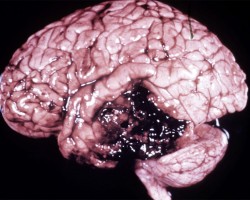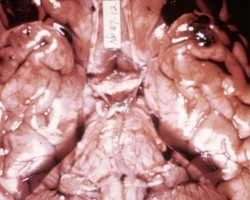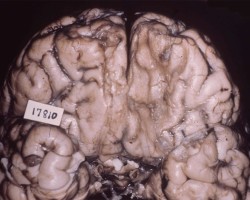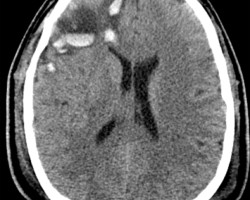Neurocritical care topics are covered frequently on the neurology Board and RITE* exams. Your expected knowledge of these topics, however, is less in-depth than other neurology topics. Here, we will cover the high-yield neurocritical care topics covered on these exams.
Author: Steven Gangloff, MD
Disorders of Consciousness
- Arousal is primarily governed by the ascending reticular activating system (ARAS) located in the pons and midbrain tegmentum.
- The ARAS has output to the reticular nucleus of the thalamus.
Definitions of states of consciousness
- Drowsy: arousable with mild stimuli.
- Delirium: waxing and waning consciousness, with impaired attention.
- Stupor: arousable only to vigorous stimulation.
- Unresponsive wakefulness: Formerly known as “persistent vegetative state.” Unresponsive to stimulation, but with the return of sleep-wake cycles and autonomic maintenance.
- Coma: not able to be aroused.
- The word “obtunded” is poorly defined and should be avoided.
Brainstem Reflexes
- Pupillary: CN II (afferent) → CN III (efferent)
- Oculocephalic: CN VIII (afferent) → CNs. III, IV, VI (efferent)
- Caloric: CN VIII (afferent) → CNs. III, IV, VI (efferent)
- Corneal: CN V1 (afferent) → VII (efferent)
- Gag: CN IX (afferent) → CNs IX & X (efferent)
Traumatic Brain Injury (TBI)
- Common causes of TBI include falls, motor vehicle accidents, assaults, explosive blasts, and penetrating injuries.
- The more severe the TBI, the higher the risk for the development of focal epilepsy.
- Radiographic findings consistent with TBI:
- Skull fractures
- Cerebral contusions, typically in areas where brain parenchyma rubs against skull bone (i.e. inferior temporal and frontal lobes)
- Coup contusions occur on the side of the trauma.
- Countercoup contusions occur on the opposite side of the site of impact.
- Pneumocephalus due to penetrating injury or skull fracture.
- Can be associated with pneumolabrinth (air in the inner ear).
- Cerebra edema
Diffuse axonal injury
- Due to shearing forces from extreme acceleration and deceleration.
- A biopsy will have swollen proximal ends of axons in the appearance of bulbs known as “retraction balls.” Punctate hemorrhages may also be seen.
Basilar skull fracture
- Battle’s sign (ecchymosis of the mastoid region) and raccoon eyes (periorbital ecchymosis) may be seen.
- May also have leakage of CSF from the ears (otorrhea) or nose (rhinorrhea).
- Can test rhinorrhea or otorrhea for β-transferrin, to determine if a CSF leak is present, as this is only positive in CSF.
Non-accidental trauma in a child
- Suspicious signs include spiral fracture of the humerus, immersion burns, rib fractures, retinal hemorrhages (from shaking), long bone injuries, duodenal hematomas, brain contusions, subdural hematoma, and skull fracture.
Spinal Cord Trauma
- For information on spinal cord anatomy and localization of lesions, see our Spinal Cord chapter.
Spinal Shock
- Disruption of autonomic sympathetic function causes unopposed parasympathetic activity, which presents with bradycardia and hypothermia.
- Caused by lesions in the spinal cord above T6. Can treat with α-agonist and β-agonist medications.
- The major causes of death after spinal trauma are spinal shock and aspiration.
Treatment
- Hypothermia and corticosteroids can be considered.
Log in to View the Remaining 60-90% of Page Content!
New here? Get started!
(Or, click here to learn about our institution/group pricing)1 Month Plan
Full Access Subscription
$142.49
$
94
99
1 Month -
Access to full question bank
-
Access to all flashcards
-
Access to all chapters & site content
3 Month Plan
Full Access Subscription
$224.98
$
144
97
3 Months -
Access to full question bank
-
Access to all flashcards
-
Access to all chapters & site content
1 Year Plan
Full Access Subscription
$538.47
$
338
98
1 Year -
Access to full question bank
-
Access to all flashcards
-
Access to all chapters & site content
Popular
Loading table of contents...
Loading table of contents...






